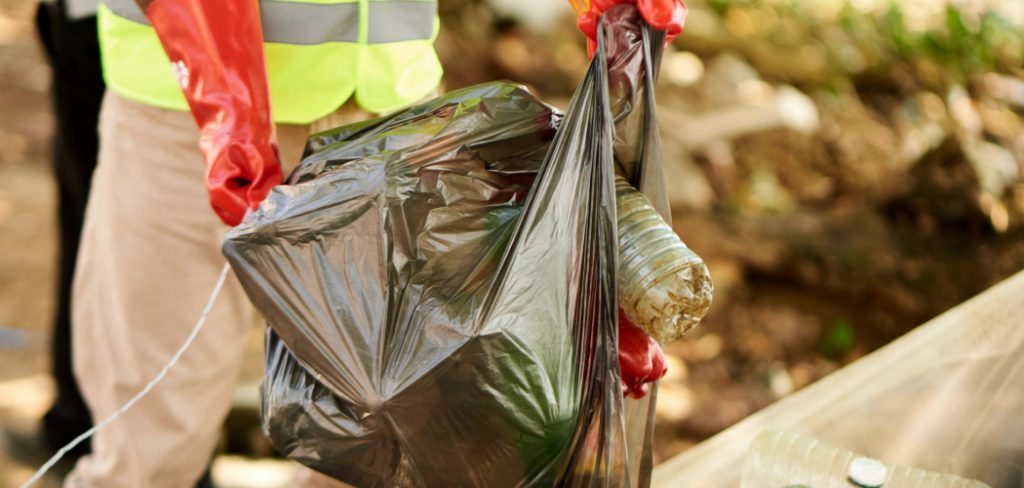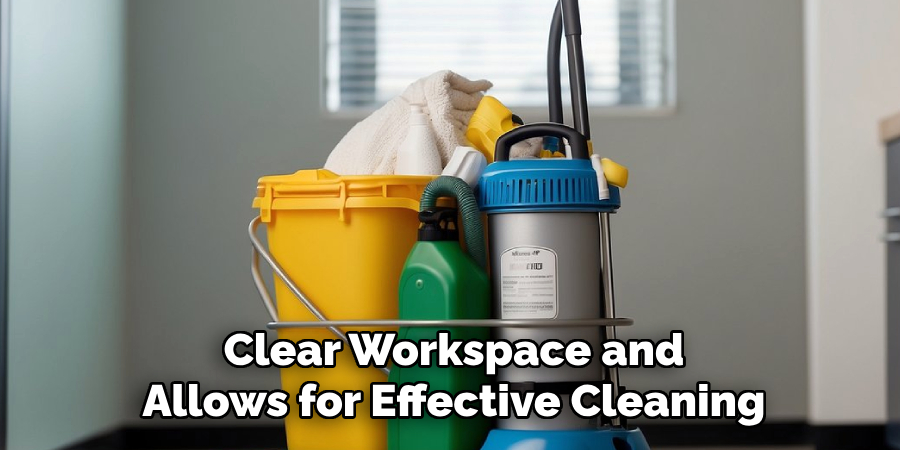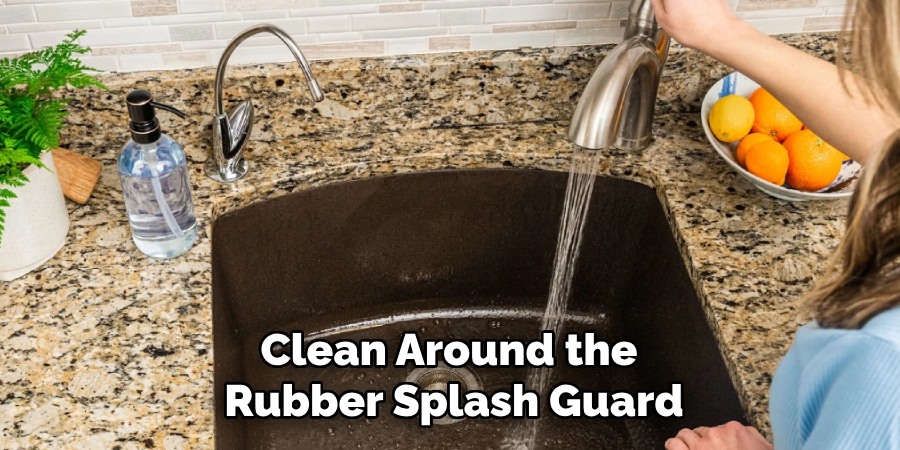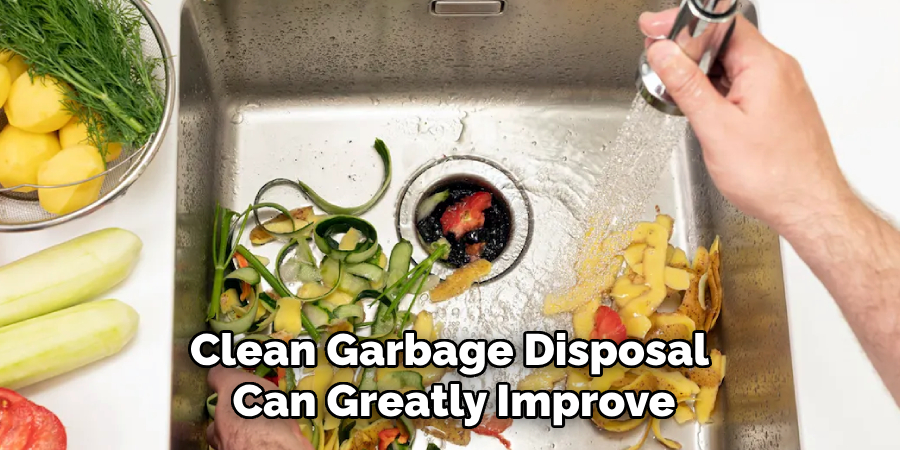A garbage disposal is a handy kitchen appliance that helps manage food waste efficiently, but over time, it can accumulate residue and develop unpleasant odors. Regular cleaning not only ensures its functionality but also prevents clogs and extends its lifespan.

Thankfully, with a few simple steps on how to clean garbage disposal and household items, you can keep your garbage disposal clean, fresh, and working smoothly.
Needed Tools and Materials
Tools:
Rubber Gloves:
Protect your hands from bacteria and sharp objects.
Cleaning Brush:
A long-handled cleaning brush with soft bristles is ideal for reaching the inside of the disposal blades.
Tongs or Pliers:
Use these to remove any large debris that may be stuck in the garbage disposal.
Materials:
Baking Soda::
This natural cleaning agent helps to remove odors and buildup in the disposal.
White Vinegar:
Also, as a natural cleaner, white vinegar helps to disinfect and deodorize garbage disposal.
Lemon or Orange Peels:
These citrus fruits not only provide a fresh scent, but also help to clean and refresh the disposal blades.
Ice Cubes:
Ice cubes help sharpen the blades of garbage disposal while also removing any residue or grime.
Dish Soap:
A small amount of dish soap can be used for additional cleaning power and a fresh scent.
6 Step-by-step Guides on How to Clean Garbage Disposal
Step 1: Preparation
Before cleaning your garbage disposal, make sure to turn off the power to avoid any accidents. You can unplug the unit or switch off the circuit breaker connected to it. Next, remove any visible food scraps or debris from the sink and the disposal opening.

This ensures a clear workspace and allows for effective cleaning. Finally, gather all necessary cleaning materials, such as white vinegar, ice cubes, dish soap, and lemon or orange peels, to have them ready before you begin.
Step 2: Cleaning the Disposal
Start by pouring a mixture of one cup of white vinegar and one cup of baking soda into the disposal. Allow the mixture to fizz and sit for about 5 to 10 minutes. This helps to break down grease and eliminate odors.
Next, rinse the disposal with hot water by running it for about a minute. For a deeper clean, add a handful of ice cubes and a few tablespoons of salt into the disposal. Turn on the disposal and let it grind the ice and salt, which will help to dislodge stuck debris and clean the blades. Finish by grinding some lemon or orange peels to leave a fresh, citrusy scent.
Step 3: Cleaning the Exterior
To clean the exterior of your garbage disposal, start by wiping down the area around the sink drain with warm, soapy water and a soft sponge or cloth. Ensure that you scrub away any grease or grime buildup to keep the sink area looking fresh and hygienic.

Next, use a toothbrush or a small scrub brush to clean around the rubber splash guard, paying attention to the folds where residue can accumulate. Rinse the area thoroughly with water, and for a complete finish, dry the surface with a clean towel to prevent water spots. Keeping the exterior clean not only improves your kitchen’s appearance but also helps maintain overall cleanliness.
Step 4: Preventative Maintenance
To keep your garbage disposal running smoothly, incorporate regular preventative maintenance into your routine. Once a month, grind a handful of ice cubes along with coarse salt to help remove debris and sharpen the disposal’s blades.
Additionally, pour a half-cup of baking soda followed by a cup of vinegar down the drain, letting the mixture sit for 10-15 minutes before rinsing with hot water. This helps eliminate odors and prevents buildup inside the disposal. By staying proactive with these simple steps, you can extend the lifespan of your appliance and avoid costly repairs.
Step 5: Use Natural Cleaning Solutions
Another way to maintain your kitchen appliances is by using natural cleaning solutions. Not only are they safer for you and the environment, but they can also be just as effective as store-bought cleaners. For example, for stainless steel appliances, mix equal parts of vinegar and water in a spray bottle to clean and remove any smudges or fingerprints.
For ovens and microwaves, combine baking soda and water into a paste and apply it on tough stains. Let it sit for 15-20 minutes before wiping away with a damp cloth. This method works well for removing grease buildup without using harsh chemicals.
Step 6: Check the Seals
Properly functioning seals are important for maintaining the energy efficiency of your kitchen appliances. Over time, seals on refrigerators and freezers can become worn or loose, allowing cold air to escape and increasing energy consumption.

To check the seals, close the door on a dollar bill. If you can easily pull the dollar out without resistance, then it’s time to replace the seal. You can find replacement seals at hardware stores or order them online from appliance manufacturers. It’s also important to regularly clean and maintain the seals by wiping them down with warm water and mild soap. This will help prevent the buildup of dirt and debris that can affect their effectiveness.
Following these simple steps on how to clean garbage disposal can greatly improve the energy efficiency of your refrigerator and help save money on your utility bills. By keeping the coils clean, adjusting the temperature settings, and maintaining the seals, you can ensure that your refrigerator is running at its most efficient level.
Common Mistakes to Avoid
When it comes to maintaining your refrigerator, there are a few common mistakes that can impact its efficiency and lifespan. One of the most frequent errors is neglecting to clean the condenser coils regularly. Dirty coils force your refrigerator to work harder, consuming more energy and potentially leading to costly repairs.
Another mistake is overloading the refrigerator or blocking air vents, which can disrupt proper airflow and result in uneven cooling. Additionally, failing to check and replace damaged door seals can result in cold air escaping, causing the unit to run more frequently. Lastly, setting the temperature too low can freeze items unnecessarily and waste energy. By being mindful of these mistakes, you can keep your refrigerator functioning optimally for years to come.
When to Call a Plumber?
Knowing when to call a plumber can save you time money, and prevent further damage to your home. If you notice persistent leaks, such as dripping faucets or water pooling under your sink, it’s time to call in a professional. Low water pressure throughout your home can also indicate a deeper plumbing issue, such as pipe blockages or hidden leaks. Additionally, frequent clogs in sinks, toilets, or showers may signal a more significant problem in your drainage system.

Strange smells or discoloration in your water can point to contamination or pipe corrosion, which requires immediate attention. Lastly, if you hear unusual sounds coming from your pipes, such as banging or gurgling, it’s best to have a plumber inspect the issue. Addressing these problems early can help you avoid costly repairs and maintain a safe, functional home.
Frequently Asked Questions
Q1: How Often Should I Clean the Coils of My Refrigerator?
A: It is recommended to clean the coils of your refrigerator at least twice a year or more frequently if you have pets or live in a dusty environment. The coils can easily collect dust, dirt, and pet hair, which can reduce their efficiency.
Q2: How Do I Clean the Coils of My Refrigerator?
A: You can use a vacuum cleaner with a brush attachment to gently remove any debris from the coils. Be sure to unplug your refrigerator before cleaning and avoid using any harsh chemicals that could damage the coils.
Q3: Why Should I Adjust the Temperature Settings of My Refrigerator?
A: By adjusting the temperature settings, you can ensure that your refrigerator is not running too cold or too warm. This can help prevent food spoilage and also save energy by reducing how often the compressor turns on.
Q4: What Are Some Tips for Maintaining My Refrigerator?
A: Regularly cleaning the coils and adjusting the temperature settings are important steps in maintaining your refrigerator. Additionally, you should check the door seals periodically to ensure they are in good condition and keep an eye out for any signs of wear or damage. It is also recommended that frozen items be defrosted regularly to prevent frost buildup and maintain proper airflow within the fridge. Lastly, make sure to follow the manufacturer’s instructions for any specific maintenance tasks or recommendations for your model of refrigerator.
Conclusion
Proper refrigerator maintenance is essential to ensure optimal performance and longevity. By consistently cleaning surfaces, monitoring temperature settings, inspecting door seals, and defrosting as needed, you can prevent common issues and maintain a reliable appliance.
Following the manufacturer’s guidelines on how to clean garbage disposal will further assist in keeping your refrigerator running efficiently and preserving the freshness of your food. With regular care, your refrigerator can serve you well for years to come. Regular garbage disposal cleaning is essential to prevent odors and maintain the efficiency of the unit.
About the Author
Adrian Green is a passionate woodworking enthusiast who has dedicated his life to the craft of woodworking. From his early days working alongside his father in the family woodworking shop, Adrian has honed his skills and developed a deep love for creating beautiful, functional pieces with his hands. As the voice behind The Woodenify Blog, he shares his knowledge, tips, and inspiration with fellow woodworkers of all skill levels, helping them build confidence in their abilities while learning new techniques.
Professional Focus
- Specializes in DIY woodworking projects, from furniture making to home décor.
- Provides step-by-step guides, tips, and practical tutorials for woodworkers at any skill level.
- Focused on empowering readers with confidence and knowledge through easy-to-follow instructions and hands-on techniques.
- Passionate about building a community where makers can share, learn, and grow together in the world of woodworking.
Education History
University of Craft and Design – Bachelor of Fine Arts (BFA) in Woodworking and Furniture Design
Woodworking Apprenticeships – Gained extensive hands-on experience through various workshops and mentorships with seasoned craftsmen, refining carpentry and furniture-making skills.
Expertise
- DIY woodworking, carpentry, furniture making, and home décor projects.
- Creating clear, accessible tutorials and guides for beginner to advanced woodworkers.
- Helping readers experience the satisfaction and fulfillment of turning raw materials into stunning finished products.
